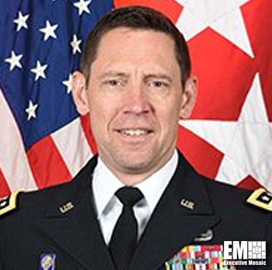Army Futures Command (AFC) has approved the development of electric powered tactical and combat vehicles by the Maneuver Capabilities Development and Integration Directorate. The directorate will begin drafting a requirements document for Tactical and Combat Vehicle Electrification (TaCVE) and will host an industry day to share electrification initiatives with industry.
“Let’s be clear. We’re behind. We’re late to meet on this thing,” said LTG Eric Wesley, former director of the Futures and Concepts Center within AFC. “If you look at all of the analysis, all of the various nations that we work with, they’re all going to electric power with their automotive fleet, and right now, although we do [science and technology] and we’ve got some research and development going on and we can build prototypes, in terms of a transition plan, we are not there.”
The electrification effort aims to decrease the Army’s reliance on fossil fuels. “The requirement also aims to increase operational reach across all maneuver formations through electric propulsion, which offers a variety of operational and tactical benefits,” said the Maneuver Capabilities Development and Integration Directorate.
Electric powered vehicles have the potential to double operational duration, implement silent mobility, increase silent watch and reduce the Army’s logistical burden by nearly half when fully implemented. The initiative will develop an entire enterprise that would support those electric vehicle fleets and other capabilities.
Wesley has also developed a proposal for the head of Army Futures Command on how the service might accomplish such an endeavor that could change the paradigm of the logistics and sustainment initiatives as well as enhance force mobility.
Bruce Jette, assistant secretary of the Army for Acquisition, Logistics, and Technology (ASA(ALT)) and 2020 Wash100 Award recipient, recently delivered a keynote address during Potomac Officers Club’s 5th Annual Army Forum on Thursday August 6th.
Throughout the past several years, the U.S. Army has continued to implement advanced technology priorities, from enhancing hardware, software, and infrastructure to expanding synthetic training environments, to improve the service branch’s acquisition and modernization processes. The Army has employed agile, responsive cross-functional teams to achieve its modernization goals and efforts.
Jette discussed the progress, innovations and accomplishments of the Army’s modernization renaissance over the last year, what challenges remain, and how industry can help in 2021 and beyond.
If you missed the event, you can still register to watch the footage in Potomac Officers Club’s Event Archive.


